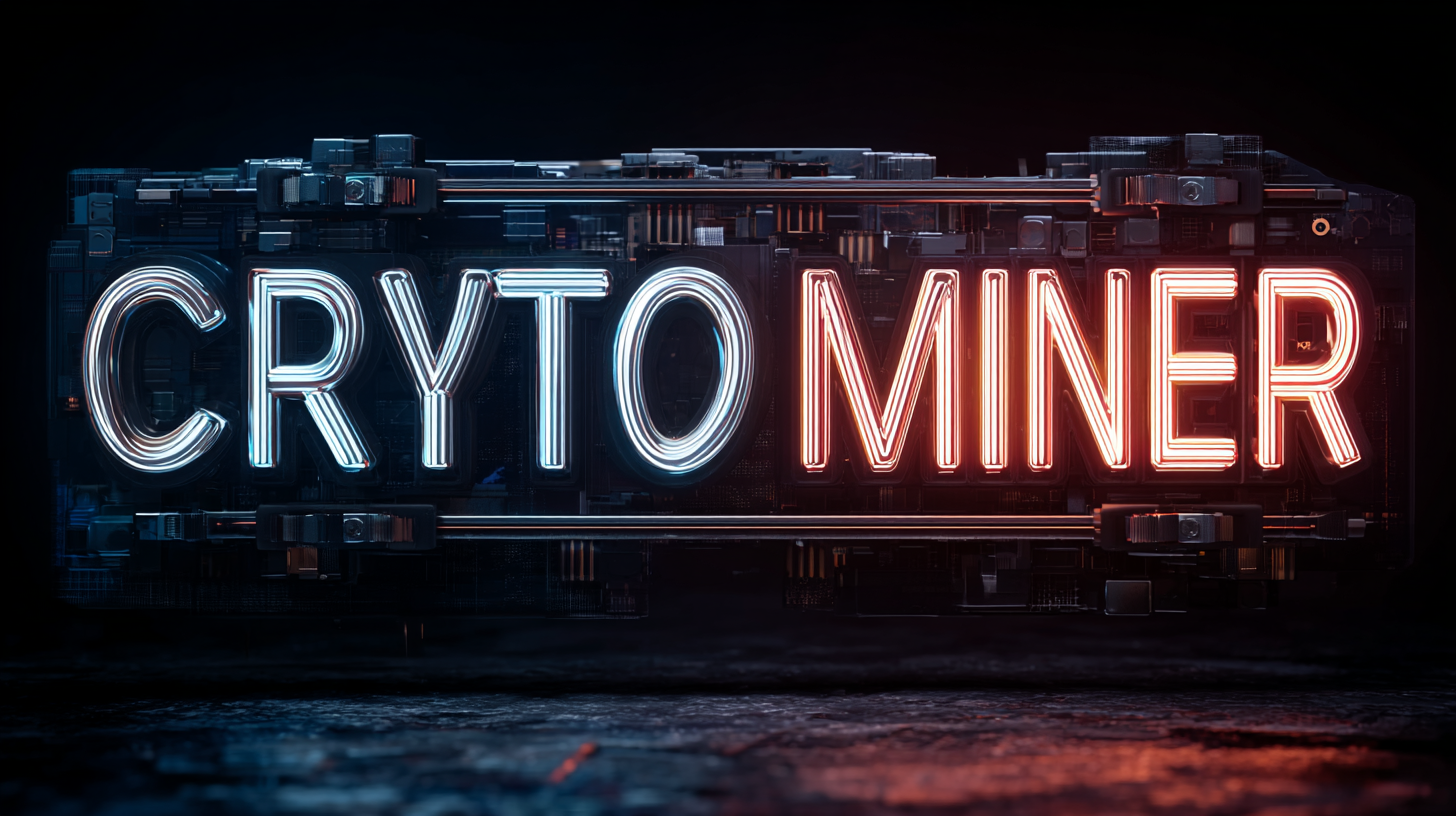Leave Your Message
As the cryptocurrency market continues to expand, choosing the right Crypto Miner has become a crucial factor for investors seeking profitable mining success. According to a recent report from the Cambridge Centre for Alternative Finance, the global Bitcoin mining industry alone has seen a significant surge, with an estimated annual energy consumption of 138 terawatt-hours, comparable to that of some large countries. This rapid growth signals not only an increase in competition but also a diversification of mining methods and technologies. New alternatives are emerging to help miners optimize their operations, improve efficiency, and maximize their returns. This guide will explore various types of Crypto Miners available on the market today, highlighting features, performance metrics, and considerations that can help you make informed decisions in this ever-evolving landscape.

When selecting a crypto miner for your needs, several critical factors must be considered to maximize profitability. A key element is the cost of electricity, which continues to play a significant role in determining the overall success of mining operations. In 2024, Bitcoin mining can still yield profits, but miners must closely monitor energy rates, as it has been reported that electricity costs can account for up to 70% of total operational expenses. Thus, seeking locations with lower energy prices can be a game-changer for profitability.
Another essential consideration is the type of hardware utilized for mining. ASIC miners are generally the most efficient but require higher upfront investments. As reported in various industry analyses, the best mining GPUs for 2025 are projected to improve performance, enabling both casual and professional miners to achieve better results without the hefty operational burden of traditional ASIC mining equipment. Additionally, cloud mining platforms have emerged as a viable alternative, allowing users to engage in mining without extensive upfront costs, democratizing access to this lucrative sector. With the right strategy and tools, miners can optimize their operations and position themselves for success in an ever-evolving landscape.

When choosing the best crypto miner, one must understand the different types available—ASICs, GPUs, and FPGAs—each offering unique advantages and efficiencies. ASIC miners are purpose-built for specific algorithms, making them highly efficient but limited to particular cryptocurrencies. In recent developments, there has been a significant surge in the computing power of networks like Bitcoin, which has increased competition among miners, leaving only the most committed players to thrive.
On the other hand, FPGA miners, known for their adaptability and efficiency, are gaining traction in the market. Recent evaluations showcase that FPGAs can outperform traditional miners, especially in scenarios with fluctuating algorithms. This efficiency comes as companies introduce innovative FPGA models, creating potential challenges for smaller altcoins that depend on less secure algorithms. With major players entering the field, the landscape for mining hardware is rapidly evolving, requiring miners to stay informed about the latest advancements to maximize profitability.
When diving into the world of cryptocurrency mining, understanding mining difficulty is crucial for maximizing profitability. Mining difficulty refers to how hard it is for miners to solve the cryptographic puzzles that secure the network and validate transactions. As more miners join the network, the difficulty adjusts to maintain a steady block discovery time, impacting the potential rewards for miners. For anyone looking to choose the best crypto miner, analyzing these fluctuations becomes essential to determine the potential return on investment.
Profitability is directly influenced by mining difficulty, as higher difficulty levels can lead to reduced earnings for miners. It’s vital to evaluate not only the current difficulty but also to forecast future trends, considering factors such as network adjustments and the total hash power of the competing miners. Miners should seek hardware that not only provides significant hashing power but also remains energy-efficient, reducing operational costs. Through a thorough evaluation of mining difficulty and its implications, miners can make informed decisions that enhance their chances for successful, profitable mining ventures.

When venturing into cryptocurrency mining, understanding energy consumption and costs is crucial for establishing a profitable operation. Mining requires substantial amounts of power, which can significantly cut into profits if not managed correctly. Each miner's energy efficiency directly impacts profitability; therefore, choosing hardware that balances hashing power and energy consumption is essential. Look for devices with higher energy efficiency ratings and compare their performance to ensure you maximize output while keeping electricity costs low.
Additionally, assessing your local energy rates can play a pivotal role in mining decisions. Regions with lower electricity prices are preferable for mining operations, as they allow for greater margins on mined cryptocurrencies. Implementing strategies such as utilizing renewable energy sources or joining community power purchasing programs can further reduce operational costs. Evaluating these factors not only informs your choice of mining equipment but also helps establish a sustainable, cost-effective mining strategy capable of enduring market fluctuations.
| Miner Model | Hash Rate (TH/s) | Power Consumption (W) | Energy Cost (USD/kWh) | Monthly Profit (USD) | Payback Period (Months) |
|---|---|---|---|---|---|
| Miner A | 100 | 3500 | 0.10 | 1500 | 6 |
| Miner B | 90 | 3200 | 0.10 | 1400 | 7 |
| Miner C | 120 | 4000 | 0.12 | 1600 | 5 |
| Miner D | 110 | 3800 | 0.10 | 1550 | 6.5 |
As cryptocurrency continues to evolve, understanding the future trends in mining technology is essential for investors looking to capitalize on this dynamic landscape. Recent reports highlight that advancements in AI could significantly enhance mining efficiency and profitability, allowing miners to optimize operations through smarter resource allocation and predictive analytics. For instance, industry experts note that by 2025, computational efficiency in mining could increase by as much as 40%, making older, less efficient mining hardware less viable for successful operations.
Additionally, regulatory changes are set to reshape the mining environment globally. Governments are actively developing new frameworks that will impact how cryptocurrencies are mined, traded, and taxed. The emergence of green energy solutions in mining, particularly in regions embracing sustainable practices, is also noteworthy. Approximately 39% of crypto miners are expected to shift to renewable energy sources by 2025, reflecting both an ethical stance and a response to increasing regulatory pressure. These shifts in technology, combined with evolving regulations, will create a complex but promising scenario for investors prepared to adapt and innovate in the space.
